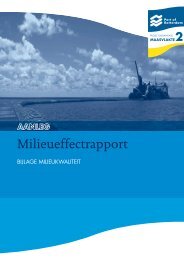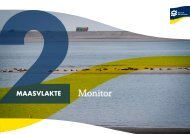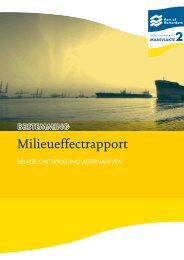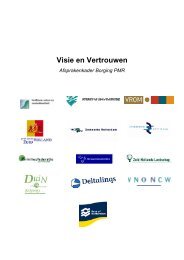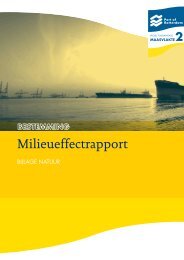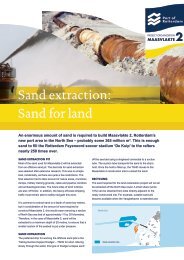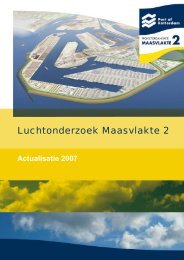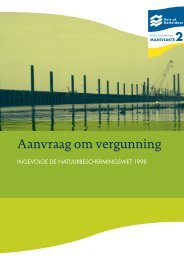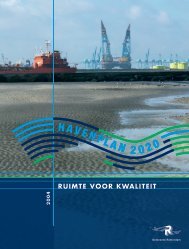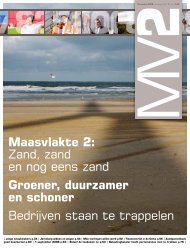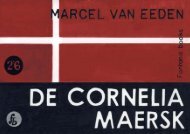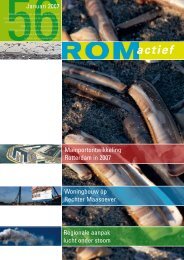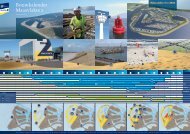Maasvlakte 2 The sustainable port (pdf, 6427Kb)
Maasvlakte 2 The sustainable port (pdf, 6427Kb)
Maasvlakte 2 The sustainable port (pdf, 6427Kb)
- No tags were found...
You also want an ePaper? Increase the reach of your titles
YUMPU automatically turns print PDFs into web optimized ePapers that Google loves.
28of seven reference designs forthe outer contour. This includedmapping out the impact of eachdesign on the coastline fromZeeland to the Wadden Sea,for example. Furthermore, astudy was made into which typeof sea wall would be the safest,most <strong>sustainable</strong>, and mostcost-effective solution. Anassessment was made of themarine safety by monitoring, forinstance, the changed wave andcurrent patterns: How safe will itbe for the seagoing vessels toenter the <strong>port</strong> under even the mostextreme weather conditions?<strong>The</strong> relation between the <strong>port</strong> site,recreation and nature functionswas reviewed: How could the threebe balanced best? <strong>The</strong> sevenreference designs were assessedon the basis of 27 criteria all in all.Separate entrance or not?Ultimately, in 2001, it was decidedto proceed with two variants witha total surface area of 2,500 ha.<strong>The</strong> main question was whetheror not it was desirable to realise adirect entrance from the sea. Twoyears on, an optimised design waspresented: the cut-through variant.It turned out that the cut-throughvariant was the mostenvironmentally friendly option, thatit benefited safety and accessibility,and that it was less expensive.An exclusive <strong>port</strong> entrance for<strong>Maasvlakte</strong> 2 in particular would bemore expensive due to thenecessary construction of a <strong>port</strong>dam. In addition, the <strong>port</strong> would stillremain inaccessible in the eventof extreme weather conditions.Moreover, this variant would causemore silt to be sucked in, meaningthat more maintenance would berequired to keep the docks at therequired depth.<strong>The</strong> cut-through variant:compact, in line with thecoastline, and safeCompact shape saves space<strong>The</strong> cut-through variant consists ofa compact plot of land with accessfor shipping via the existingYangtzehaven area. This explainsthe name ‘cut-through variant’:the entrance to <strong>Maasvlakte</strong> 2 is acut-through from Yangtzehaven.<strong>The</strong> compact shape of thecut-through variant forms anefficient solution for the planningof the available space: less landis required to arrive at the samevolume of grantable space.<strong>Maasvlakte</strong> 2 will be 2,000 insteadof 2,500 ha in size and there willstill be 1,000 ha of newly availablesites. <strong>The</strong> reduction in size was notat the cost of the net grantable



